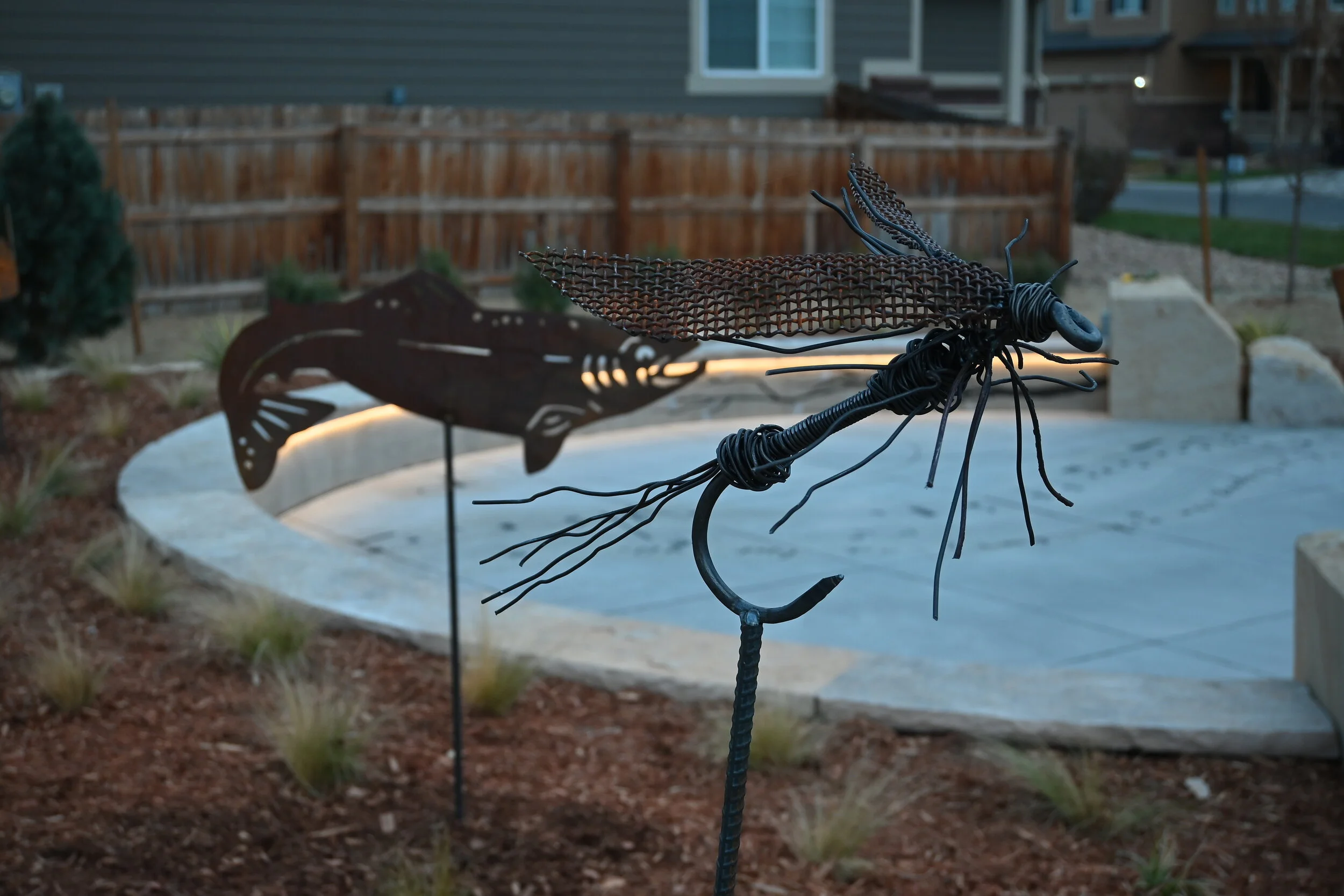By John Rainey and Dave Peterson, PLA
For over a decade, the GRASP® Component Based method for Level of Service analysis has been the Gold Standard of community park system evaluation processes. Now we are adding a new element to this proven process: Active Participation Rates. Rather than simply determining acres of parks per 1,000 residents, GRASP® Active takes an approach that begins to equate parks and park access to physical activity and public health. This new process combines the latest research in performance metrics and public health indicators with GRASP® which measures quantity, quality, and distribution across a system.
Geo-Referenced Amenities Standards Process (GRASP®) methodology, a co-creation of GreenPlay and Design Concepts, is a method of determining level of service of parks and recreation opportunities in a community. It has been developed over the past 15 years and proven on more than 100 plans representing many of the nation’s top CAPRA accredited and Gold Medal agencies. Recognizing the value that GRASP® has brought to parks and recreation planning, other firms have adopted similar methods. Meanwhile, the GRASP® methodology has continued to evolve and remains at the forefront of innovation and expertise in the field. “We are able to offer a much more detailed and refined picture of the level of service for the parks and recreation system in any community,” says Teresa Penbrooke, CEO and Founder of GreenPlay, LLC. “GRASP® goes beyond the typical lands-and-features analysis to incorporate historical values, cultural arts, and other unique aspects of your system while taking into account the quality and condition of each asset.”
Performance Metrics for Greenspace and Public Health
“The concept of parks and greenspace as policy elements with which governments promote the health and well-being of citizens emerged nearly 200 years ago. The importance of this function for parks has varied over the years, but recent concerns for public health has sparked heightened interest in the capacity of parks and other public greenspaces within the built environment to encourage and facilitate healthy lifestyles,” says Robby Layton, PhD and Partner with Design Concepts. Layton was the first to introduce the element of activity to level of service analysis in his foundational study in Raleigh, North Carolina, for his PhD dissertation.
Building on the exploratory study, additional analysis was conducted in Golden, Colorado, which ultimately combined the GRASP® component based level of service analysis with anticipated physical activity levels to evaluate the parks system for level of service based on the distribution, quality, and energy expenditure of park components. The overall goal of such analysis is to identify potential gaps in the current level of service based on equitable distribution across the system. A 2010 study titled, “Parks, Playgrounds, and Active Living,” conducted by Active Living Research, found evidence that, “park proximity is associated with higher levels of park use and physical activity, particularly among youth.” The study also suggests that more parks and more park acreage correlate with higher physical activity levels.
“GRASP® Active allows a community to focus on health and well-being by using physical activity as a measurable aspect of the LOS analysis” according to Dave Peterson, RLA, Director of Specialized Planning at Design Concepts. “By applying physical activity measured in AEE (Active energy expenditure) to a GRASP® analysis, we are able to reveal a deeper analysis of what is really happening by neighborhood. This gives us a relative value in terms of each individual component’s effectiveness at generating physical activity within the population, and offers a linear relationship between per capita level of service and activity participation specific to that community. It also gives us the ability to compare activity participation rates between different parks, which when evaluated with demographic and economic data can greatly improve a community’s evaluation of recreation amenities.”
Why Level of Service?
Level of Service may be defined as the extent to which a recreation system provides residents of a community access to recreational assets and amenities. It is indicative of the ability of people to pursue active lifestyles and connect with nature. It can have implications for health and wellness, the local economy, and quality of life. Further, Level of Service for a recreation system tends to reflect community values. It is often emblematic of the manner and extent to which people are able to connect with their communities and live lifestyles focused on outdoor recreation and healthy living.
GRASP® Active Methodology
The GRASP® level of service analysis inventories and analyzes recreation system assets using an Asset Scoring method that evaluates the condition, size, site capacity, and overall quality of components as they reflect the expected quality of recreation features in a community. The analysis builds upon traditional capacity analysis, but is unique in its ability to analyze both the quantity (capacity) and quality of individual components of an entire system. These include traditional parks assets such as playgrounds, ballfields, pools, and courts, but also includes specialty components, such as trails, waterfront access, disk golf, dog parks, plazas, art, natural areas, shelters, equestrian facilities, pickleball courts, and centers that have not been previously included (or that may not yet be in place) in capacity analysis, but provide important community services.
The process was developed to provide detailed, customized analysis of a system based on the unique assets of the community to determine how effectively the current system is serving residents and visitors. For example, in the traditional capacitystyle system, all baseball fields are inventoried as, “a baseball field.” Using the GRASP® system, we add functional scoring that identifies the differences between practice fields, game fields, and youth fields, and other attributes and contributing characteristics. We are able to:
- Determine current level of service and where improvements can be made based on walkability, quantity, and quality of any and all parks, recreation facilities, open space, and trails.
- Identify precise gaps and opportunities for location of future development of specific components, beyond just park land needs.
- Provide information for prioritization of these identified gap areas based on quantified demographics and social equity variables.
GRASP® adds more analysis on specific components, alternative providers, and programmatic locations beyond the basic parcel analysis. Specific Perspective Analyses are determined based on key issues identified by the community, and usually include detailed heat mapping, population density comparisons, area sub-analysis, comparative charts of scoring, programmatic analysis, and/or evaluation of specific key components that may be priorities for the community.
With GRASP®, in addition to the System Resource Maps, we provide a full Community Inventory Atlas, which includes aerial mapping graphics and textual descriptors for each site. Once fully analyzed, the data will provide the basis for recommendations for making improvements to address unmet needs for both active and passive recreation for many years to come. This detailed dataset can also provide a strong basis for future digital assets management and maintenance plans.
Beyond quality and functionality of components, however, GRASP® also takes into account important aspects of a park or recreation site that are easily overlooked. Not all parks are created equal, and the quality of a user’s experience may be determined by their surroundings. For example, the GRASP® system acknowledges the important differences between these identical playground structures depicted in the following photos. In addition to scoring components, each park site is assessed for its comfort, convenience, and ambient qualities. This includes the availability of amenities such as restrooms, drinking water, shade, scenery, etc. These modifier values then serve to enhance or amplify component scores at any given location.
Park Components, Physical Activity, and Average Energy Expenditure Rankings
GRASP® Active builds on this methodology, analyzing the system with regard to energy expenditure. Energy expenditure (EE) can be defined as the amount of energy or calories a person exerts for a given activity. The contribution of individual components toward physical activity varies. One study found that gymnasiums and baseball fields were the busiest areas, while areas most frequently used were dog parks, walking paths, water features, and multipurpose fields. The North Carolina State Cooperative Extension Service provides a listing of features commonly found in parks and a rating of the average energy expenditure within each feature by all participants. Another study conducted through Active Living Research titled, “Cost Analysis for Improving Park Facilities to Promote Park-based Physical Activity,” looked at visitors in parks and classified behaviors of users based on three activity levels: “sedentary (such as standing, sitting, lying down), moderate activity (such as walking and other moderate intensity activities), and vigorous activity (such as running, climbing, jumping).” The list of features in this study can be approximately equated to the set of GRASP® component modifiers described earlier. Using the feature list and a simplified low, medium and high rating for energy expenditure, each GRASP® component “has a relative value in terms of its effectiveness at generating physical activity within the population.”
Participation and Demographic Analysis
















